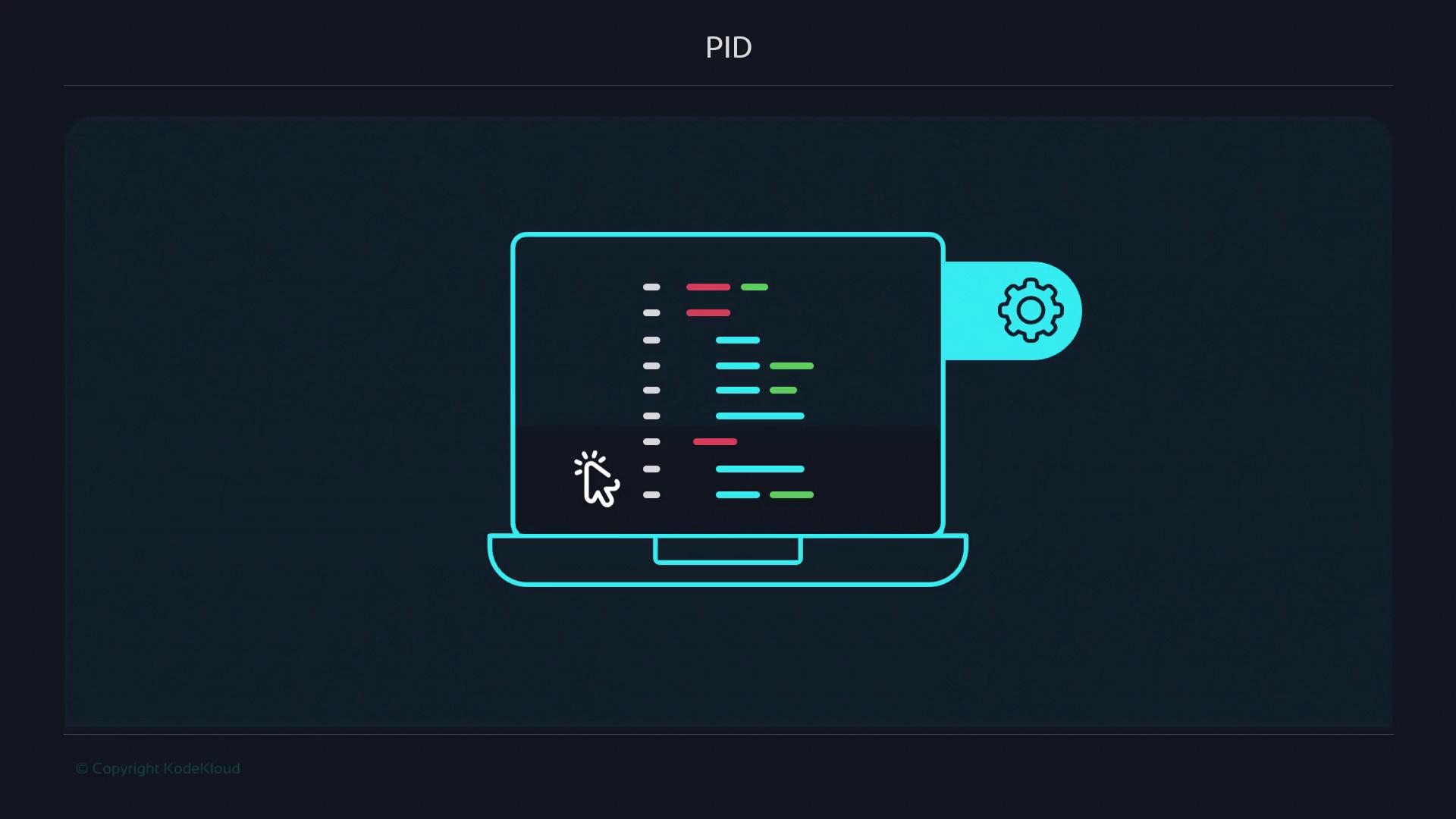Advanced Bash Scripting
Refresher
pid
If you think about it, a shell script is essentially a list of commands organized in a file, using programming constructs to automate complex tasks and workflows.

When you run a command or script, the kernel assigns a unique Process ID (PID) to each new process. Tracking these PIDs helps you monitor and control processes in real time. But how many PIDs get created when you execute a shell script?
![]()
Parent and Child Processes: The Chef Analogy
Imagine your interactive shell as a head chef. Every command you type is like an instruction to a kitchen worker (a child process).
- Parent shell: The chef leading the kitchen. When you open a terminal, the shell process you see is the parent.
- Child process: A sous-chef executing a single task. Each command you issue spawns its own PID, but it remains tied to the parent shell.

Each instruction the chef gives is a separate process you can inspect, pause, or terminate—just like sending signals to worker processes.

TTYs and Session Leaders
Every terminal window or tab runs on its own TTY (teletypewriter). The shell process that controls that TTY is called the session leader. Child processes inherit the same TTY but get new PIDs. To discover your current TTY and Bash session PID, run:
$ tty
/dev/ttys007
$ ps -ef | grep bash
501 29998 27796 0 11:00PM ttys007 0:00.01 bash
501 29928 29998 0 11:00PM ttys007 0:00.00 grep bash
Spawning Scripts and Their Children
When you execute a shell script (./script.sh), the shell launches it as a child process. That script can then spawn its own children, all under the same TTY.

Demonstration Across Two Tabs
Let’s walk through an example using two terminal tabs:
First tab (TTY
/dev/ttys000):$ tty /dev/ttys000 $ ps -ef | grep bash 501 87852 87851 0 8:32PM ttys000 0:00.76 -bashSecond tab (TTY
/dev/ttys001):$ tty /dev/ttys001 $ ps -ef | grep bash 501 8561 8560 0 12:36AM ttys001 0:00.04 -bashBack in the first tab, create and run a simple script:
$ vi script.sh # add: sleep 180 $ chmod +x script.sh $ ./script.shThe script occupies the shell. In tab one, you’ll now see:
$ ps -ef | grep bash 501 87852 87851 0 8:32PM ttys000 0:00.76 -bash 501 8689 87852 0 12:36AM ttys000 0:00.00 /bin/bash ./script.shInspect the
sleepprocess:$ ps -ef | grep sleep 501 8690 8689 0 12:36AM ttys000 0:00.00 sleep 180
This hierarchy clearly shows:
- The parent shell (
-bash) - The
script.shchild - The
sleepgrandchild
Note
Commands built into Bash (built-ins) run in the shell itself and don’t generate new PIDs. External commands and scripts always spawn child processes.
Managing Process Lifecycles
Press Ctrl+C in the first tab to send
SIGINTand terminate the script.Run a job in the background:
$ ./script.sh & [1] 8862Warning
Background jobs started with
&still depend on the terminal. Closing the tab kills them.Detach completely using
nohup:$ nohup ./script.sh & [1] 9028 appending output to nohup.outThis frees the process from the TTY—closing the terminal won’t stop it.
Quick Process Management Reference
| Action | Command | Description |
|---|---|---|
| Run program by name | $ cat file.txt | Uses $PATH |
| Run by absolute path | $ /usr/bin/cat file.txt | Full path invocation |
| Run from current directory | $ ./script.sh | Prefixed with ./ |
| List processes | $ ps -ef | grep bash | Filters bash processes |
| Terminate (SIGTERM) | $ kill PID | Graceful shutdown |
| Terminate (SIGKILL) | $ kill -9 PID | Forceful kill |
| Trace system calls | $ strace -Tfp PID | Monitor system calls |
| Command Type | Creates New PID? | Example Commands |
|---|---|---|
| Shell Built-in | No | cd, echo |
| External Command | Yes | ls, sleep |
Useful Links and References
Watch Video
Watch video content